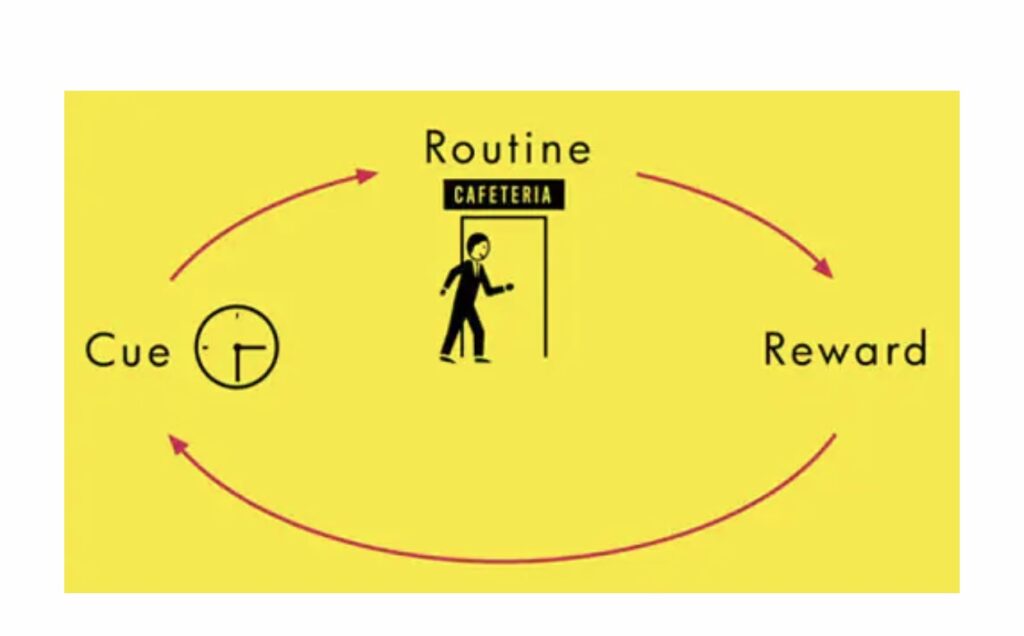I think changing even one habit can change your life. But habits are notoriously hard to change. This article explores the keys to successful habit change.
Have you ever made a New Year’s Resolution on January 1 to change a habit? To either get rid of a bad habit or pick up a good one? I’m guessing the answer for most of you is “Yes.” Has that resolution gone by the wayside a few days later? I’m guessing for most of you the answer is “Yes” again. We are creatures of habit.
“Much of our daily lives are taken up by habits that we’ve formed over our lifetime. An important characteristic of a habit is that they are automatic– we don’t always recognize habits in our own behavior. Studies show that about 40 percent of people’s daily activities are performed each day in almost the same situations.” sciencedaily.com
GPA+ (Goal, Plan, Action Steps)
In order to make a successful habit change you must first make the commitment to change. One author suggested you must first decide how much you want to hurt.
Goal
There are many theories on how to progress but the first thing you must do is to make a goal. A SMART goal:
- S specific. Saying “I’m going to read more” is not specific. How will you know when you have reached that goal? How will you know what to aim for? “I am going to read 2 books each month.” That is specific.
- M measurable. Make sure there is a way to track your progress. Like being accountable to someone.
- A attainable. Is your goal within reach? Don’t set yourself up to fail.
- R relevant. The goal should be important to you. Does it fit into your bigger picture?
- T time-bound. Your goal needs a deadline.
“You may have set goals in the past that were difficult to achieve because they were too vague, aggressive or poorly framed. Working toward a poorly crafted goal can feel daunting and unachievable. Creating SMART goals can help solve these problems. Whether you’re setting personal or professional goals, using the SMART goal framework can establish a strong foundation for achieving success.” indeed.com
Plan
Deciding on a change and setting your goal is a huge step toward change. But, that alone will not bring about the change. If you want to take a trip, deciding where to go is the first step, but you won’t actually go anywhere until you put your car in motion. You must make a plan and put it into motion to make a habit change.
Action Steps
Most people will agree that changing habits is hard. We have the habits we do because they have helped us achieve what we wanted. We are who we are because of habit; remember 40% of our decisions every day are habit-based. To have successful habit change we must take action. The following sections describe several approaches to taking action on habit change.
Identity-Based Habits
James Clear, author of Atomic Habits, says one way to change a habit is to concentrate on who we want to become. Build identity-based habits.
He says changing your habit begins with changing the belief that placed you where you are. After you have written your goal take up a new identity in line with what you want to be achieved. Express the desire like it is who you already are, this way you are more motivated and associate with it. Get comfortable with that new version of yourself and it will become you. As an example, if you want to lose weight as your goal, and your plan is to eat better, you express it as I am a person that buys, prepares and eats healthy food. Core motivation is when a habit becomes part of your identity. It becomes part of your 40%.
“Identity based habits are a two way street. This is a unique feedback loop where your identity shapes your habits and your habits shape your identity.” James Clear Atomic Habits Workbook
The Habit Loop
Another approach to habit change is to replace a bad habit with a good one. Charles Duhigg, in The Power of Habit: Why We Do What We Do in Life and Business, believes that habits consist of a simple, but extremely powerful, three-step loop. According to Duhigg:
“First, there is a cue, a trigger that tells your brain to go into automatic mode and which habit to use. Then there is the routine, which can be physical or mental or emotional. Finally, there is a reward, which helps your brain figure out if this particular loop is worth remembering for the future. Over time, this loop… becomes more and more automatic. The cue and reward become intertwined until a powerful sense of anticipation and craving emerges.”
His rule of habit-changing is that you have to play by the rules and there’s no escaping the three-step loop (e.g. cue, routine, reward) as shown here:

If you want to get rid of a bad habit, you have to find out how to implement a healthier routine to yield the same reward. As example it’s lunch time at work (Cue). Your coworkers are ordering fast food (Routine). And you like to join in and get lunch even if it’s unhealthy because you enjoy sitting in the break room talking and chatting with your co-workers (Reward). Approaches to change your routine might be to bring your lunch but still eat with friends. Or you might introduce healthier places to order food. Maybe you bring an apple and have a friend go for a walk at lunch. All get you the reward (socialization) but you change the routine to fit with your plan.
Recognizing and using the Cue-Routine-Reward loop can improve your chance for successful habit change.
Habit-Stacking
One more way to execute your plan for successful habit change is called “habit-stacking.” Habit-stacking is a special form of an implementation intention. Rather than pairing your new habit with a particular time and location, you pair it with a current habit. This method, created by BJ Fogg as part of his Tiny Habits program, can design an obvious cue for nearly any habit. You use a habit you already have as a cue to implement a new or changed habit. So, to put it in your plan and record as an action step:
After/Before [CURRENT HABIT], I will [NEW HABIT].
For example: As I step in the shower I will repeat a positive affirmation. Or, When I take the dog for a walk I will add extra distance each night. Or, after I sit down to dinner, I will say one thing I’m grateful for that happened today. Here is another one: Before I afternoon snack, I will walk for 10 minutes.
The reason habit-stacking works so well is that your current habits are already built into your brain. You have patterns and behaviors firmly strengthened over years. By linking your new habits to a cycle that is already built into your brain, you make it more likely that you’ll stick to the new behavior.
GPA+ for Successful Habit Change
A few last words on your GPA (Goal-Plan-Action Steps). Habit change is hard and despite how much you want it, you will slip up. Accept that as part of human nature. If you fall off, get back on don’t give up.
If you can, share your habit change journey with friends if someone else knows it could help keep you accountable.
When I start trying to add a new habit, I write it in my to-do list every single day. That way I have an extra reminder to get it done. If I slip-up I write it bigger the next day.
Know why you’re trying to create the new habit. I post notes in places I will see reminding me. Trying to meditate or exercise every day isn’t going to be sustainable if you’re only doing it because you think you should, and not because you actually want to.
“If you believe you can change – if you make it a habit – the change becomes real.” Charles Duhigg, The Power of Habit: Why We Do What We Do in Life and Business
P.S. I have included a Habit Change Process Diagram for you to use if you choose. It can be accessed by clicking HERE.
P.P.S. Links to the Atomic Habits book and its companion workbooks can be found on our Resources Page.
* Please leave a comment below. You may comment anonymously or you may use your first name. We may post or quote your comment on the website. We will never post or share your last name, email address or any other personal identifying information.
